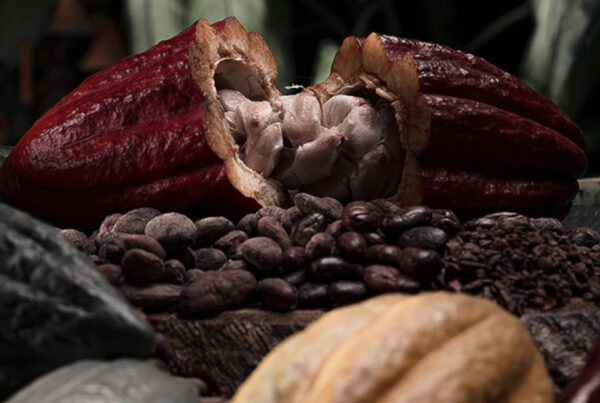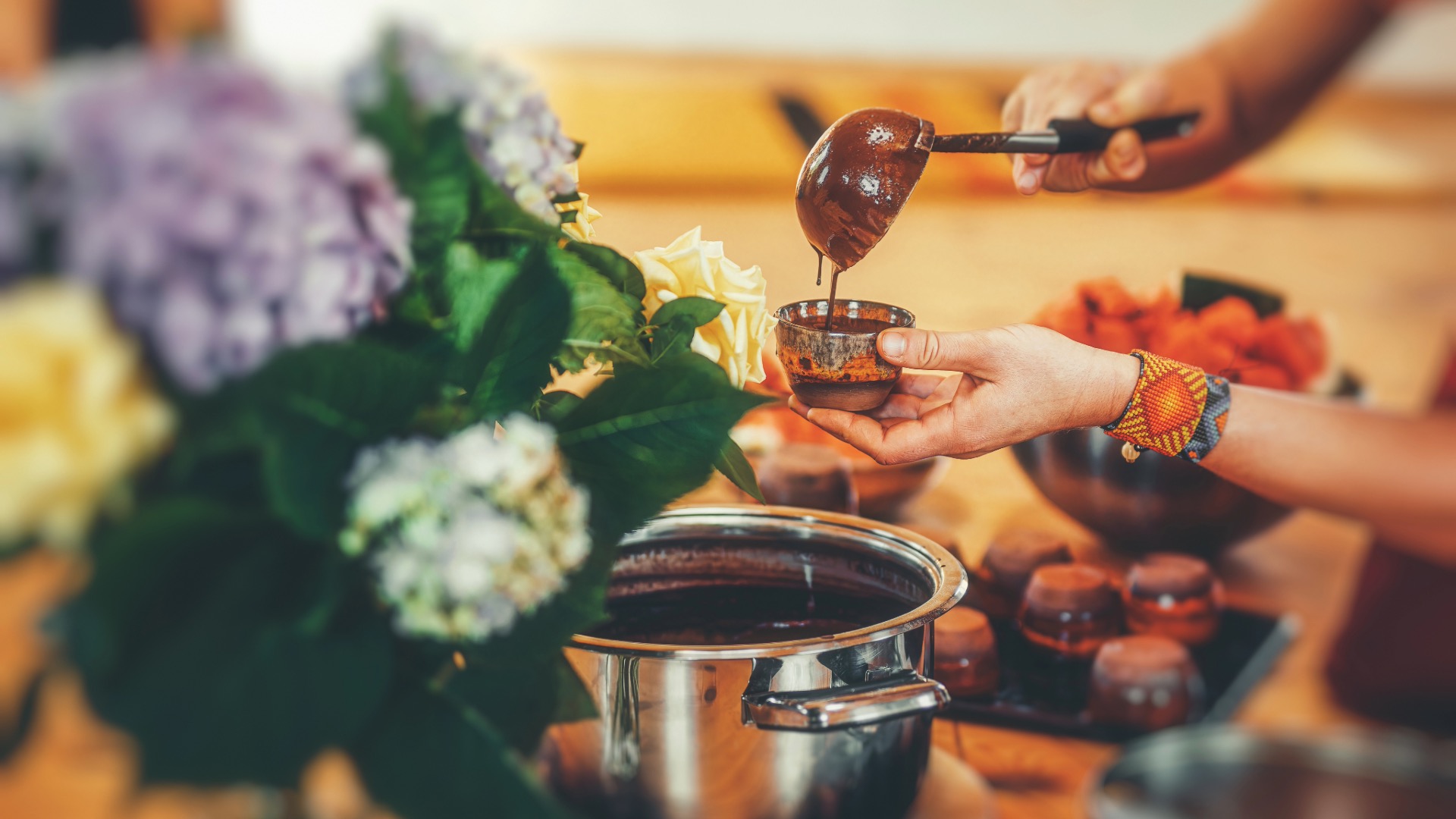Cacao has been revered for centuries as more than just a food or drink—it is considered a sacred plant medicine with profound spiritual significance. From its origins in ancient Mesoamerican traditions to its modern-day use in ceremonies and wellness practices, cacao’s connection to the spirit runs deep.
In this article, we’ll explore why cacao is considered so spiritual, its historical roots, and how it continues to inspire heart-opening and transformative experiences today.
1. Cacao’s Role in Ancient Spiritual Practices
Mesoamerican Roots
The spiritual reverence for cacao can be traced back thousands of years to the Mayan and Aztec civilizations. Known as the “food of the gods” (Theobroma cacao), cacao was used in sacred rituals to honor deities, foster connection with the divine, and mark significant life events.
- Mayan Ceremonies: The Mayans considered cacao a bridge between the physical and spiritual realms. They used it in rituals to invoke guidance, blessings, and healing.
- Aztec Offerings: The Aztecs offered cacao to gods such as Quetzalcoatl, the feathered serpent deity associated with wisdom, fertility, and the earth.
Sacred Symbolism
For these cultures, cacao symbolized life, abundance, and spiritual awakening. Its preparation and consumption were often accompanied by prayer, chants, or meditation.
2. Cacao as a Heart-Opening Plant Medicine
Cacao is often called a “heart-opener,” both physically and emotionally, making it an ideal ally for spiritual practices.
Physical Heart Effects
- Cacao’s active compound, theobromine, is a gentle stimulant that increases blood flow, particularly to the heart and brain. This creates feelings of warmth, connection, and presence.
Emotional Openness
- Many people report that cacao fosters a sense of emotional vulnerability and openness, making it easier to connect with themselves and others on a deeper level.
3. Cacao and Mindfulness
Drinking ceremonial cacao is often paired with practices like meditation, journaling, or yoga, enhancing its spiritual impact. The act of preparing and consuming cacao mindfully encourages:
- Presence: The ritual slows you down, helping you tune into the moment.
- Intention: Setting intentions during a cacao ceremony aligns your focus and energy.
- Connection: Sharing cacao in a group fosters a sense of community and collective healing.
These elements transform cacao from a simple beverage into a powerful spiritual experience.
4. Cacao and the Energetic Body
In spiritual traditions, cacao is believed to work on an energetic level, particularly with the heart chakra.
Heart Chakra Activation
- The heart chakra, or Anahata, represents love, compassion, and connection. Cacao’s heart-opening properties are thought to activate this energy center, promoting feelings of love and gratitude.
Grounding and Centering
- While cacao uplifts the spirit, it also has grounding qualities. Its rich, earthy flavor and natural compounds create a balanced state, connecting you to both the physical and spiritual realms.
5. Cacao as a Tool for Transformation
Cacao is often used in ceremonies to support personal and spiritual growth. These ceremonies can help individuals:
- Release Emotional Blockages: By fostering openness, cacao can help you process and release pent-up emotions.
- Gain Clarity: The enhanced focus and presence brought by cacao make it easier to reflect on your intentions and life path.
- Deepen Self-Connection: Cacao provides a gentle yet profound way to reconnect with your inner self.
6. The Ritual of Cacao Preparation
The preparation of ceremonial cacao is itself a spiritual act. Every step—grinding the cacao, melting it into water, and adding spices—is done with intention. This process transforms cacao from an ingredient into a sacred offering.
Sacred Ingredients
Traditional ceremonial cacao recipes often include ingredients like cinnamon, cayenne, or honey, each with its own spiritual or energetic significance.
Mindful Consumption
Drinking cacao slowly and with gratitude enhances its spiritual effects, turning an everyday act into a moment of mindfulness and connection.
7. Modern Cacao Ceremonies
Today, cacao ceremonies are practiced worldwide, often blending traditional elements with modern spirituality. These ceremonies serve as a space for:
- Community Connection: Sharing cacao in a group amplifies its collective energy.
- Personal Reflection: Many ceremonies incorporate meditation, journaling, or breathwork to deepen self-awareness.
- Spiritual Exploration: Cacao is often used as a gateway to higher consciousness or deeper connection with the divine.
8. Cacao’s Ability to Bridge Cultures
Cacao’s universal appeal as a spiritual tool transcends cultural boundaries. While rooted in Mesoamerican traditions, its spiritual qualities resonate with people from all walks of life, making it a unifying force.
How to Embrace the Spirituality of Cacao
- Choose Ceremonial-Grade Cacao
- Opt for high-quality cacao sourced ethically and sustainably to honor its sacred roots.
- Set Intentions
- Approach cacao with intention, whether for self-reflection, gratitude, or connection.
- Incorporate Mindful Practices
- Pair cacao with meditation, yoga, or journaling to enhance its spiritual effects.
- Honor Its Origins
- Acknowledge and respect the Indigenous cultures that have preserved cacao’s sacred traditions.
Final Thoughts
Cacao’s spiritual power lies in its ability to open the heart, calm the mind, and connect us to ourselves, others, and the divine. Its long history as a sacred plant medicine continues to inspire modern practices that nurture love, gratitude, and transformation. Whether you use cacao for personal rituals or communal ceremonies, its spiritual resonance can profoundly enrich your life.
At School of Cacao, we honor cacao’s sacred legacy by offering ethically sourced, ceremonial-grade cacao. Discover how this ancient plant can support your spiritual journey.
Have you experienced the spiritual effects of cacao? Share your thoughts or stories in the comments below!



